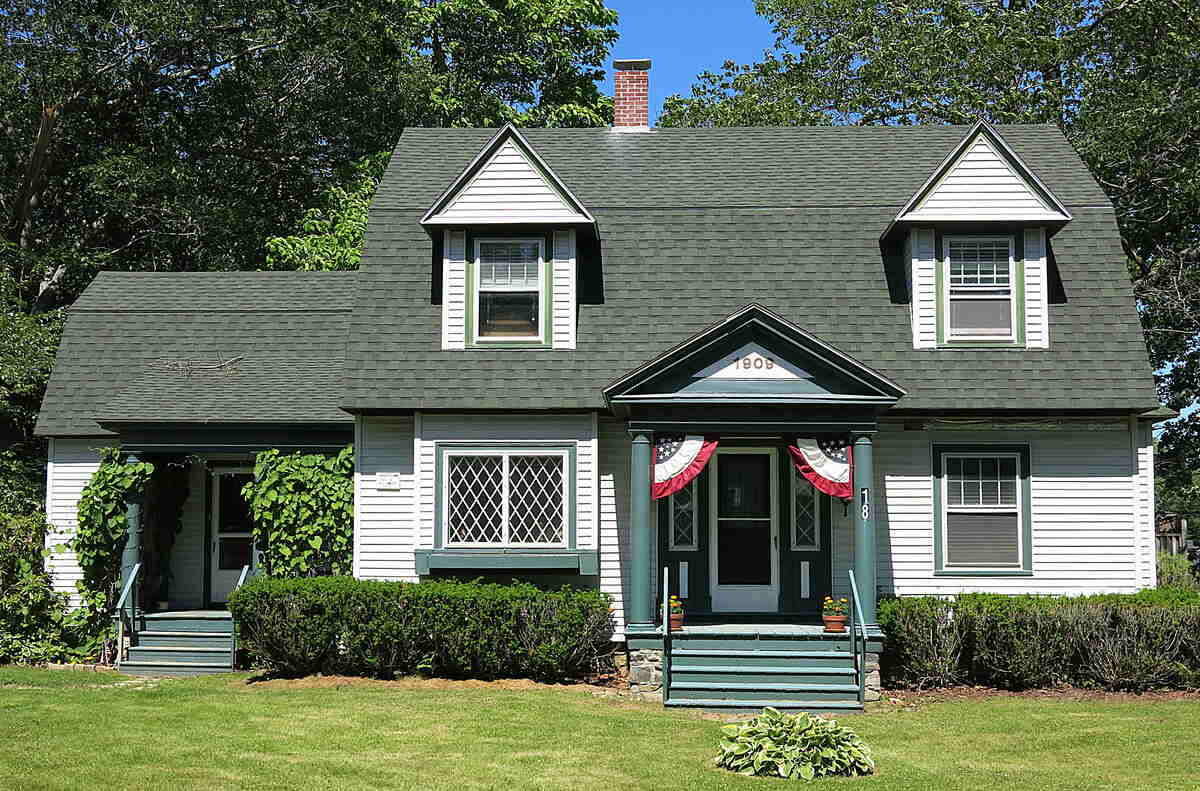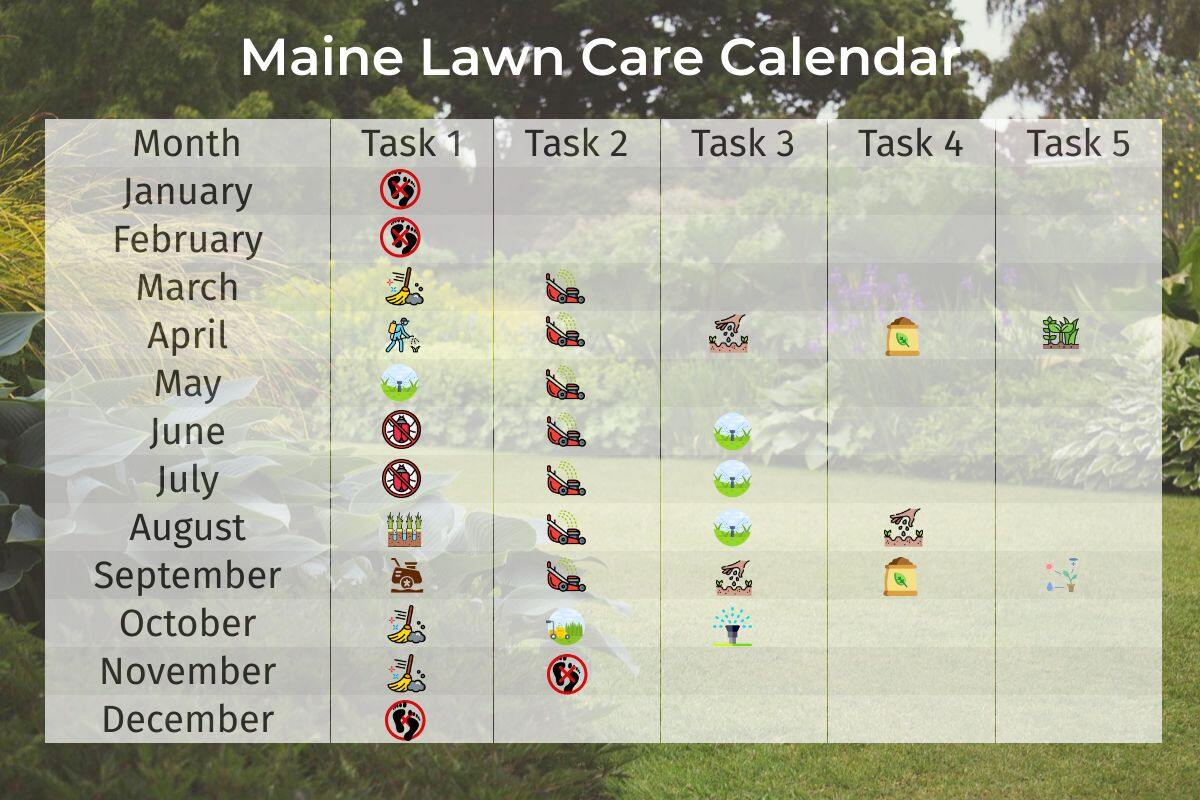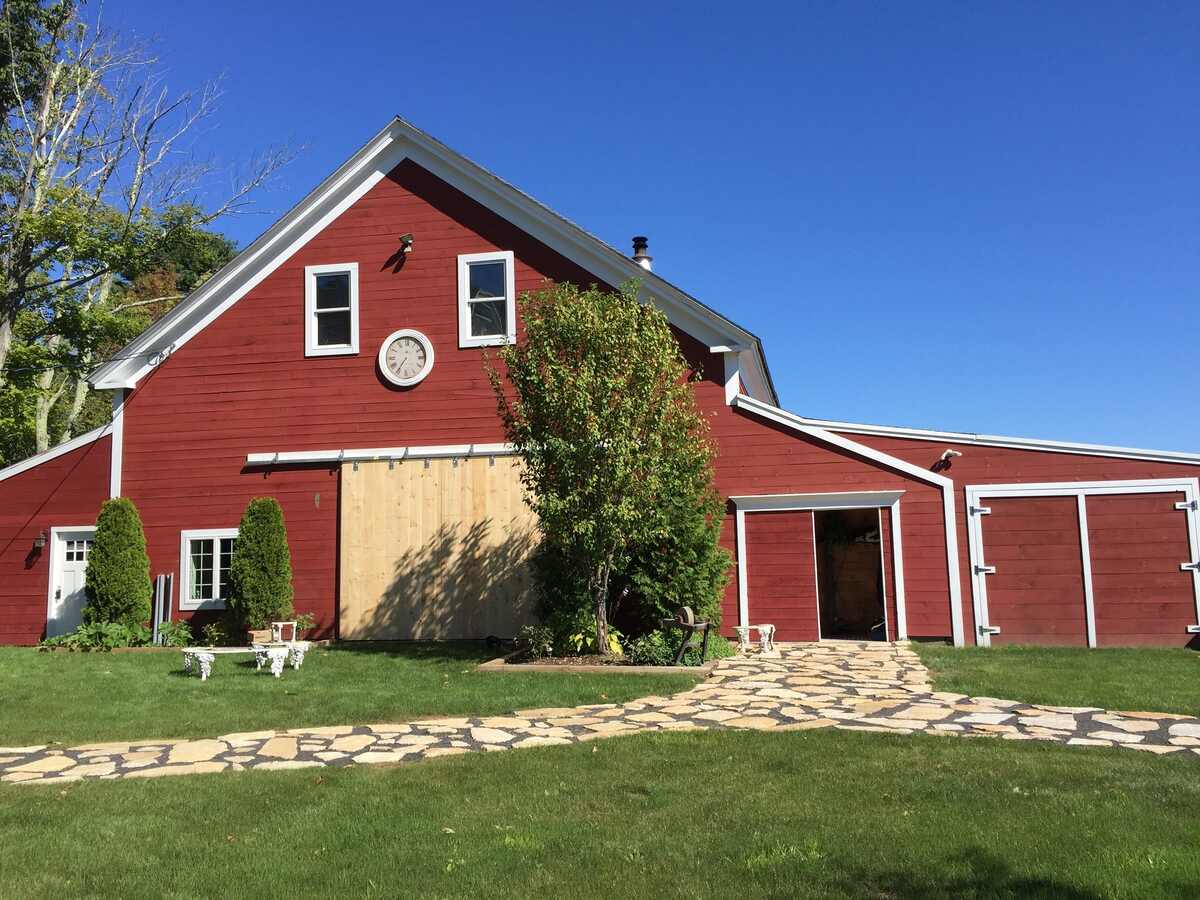
The best grass seeds for lawns in Maine are Kentucky bluegrass, red fescue, tall fescue, and perennial ryegrass. These cool-season varieties are resilient in Maine’s climate and easily adapt to its varying soil conditions.
But what makes these grass seeds ideal for the state’s diverse climate and soil? Well, it’s not a simple answer, but it wouldn’t be Maine if it was. Read on to find out which one is ideal for your lawn, whether you live in the cool northern areas or the weather-prone western hills.
Best Types of Grass Seed in Maine
As any good Downeaster knows, “You can’t get there from here” when taking shortcuts on lawn prep. Choosing the right grass seed for the wildly fluctuating weather in Maine means doing your homework and getting that local wisdom.
Here are a few hearty contenders known to thrive in New England’s northeastern corner:
1. Kentucky Bluegrass

Photo Credit: Shutterstock
It has “blue” in its name, suggesting it could be a good fit for those cooler hues of Maine’s climate. And honestly? Kentucky bluegrass really stands out for its excellence in tolerating those harsh winters Maine is known for.
Letting this grass stretch its roots in well-drained, fertile soil will reward you with a fine to medium-textured lawn that’s tough enough for athletic fields or as a backdrop for a family picnic.
As much as Kentucky bluegrass shines, its preference for the spotlight means it doesn’t enjoy the shade too much. You’ll find it’s a standout in the sunny spots, so if your lawn has lots of shade, let’s consider another option.
- Classification: Cool-season grass
- Spreads by: Rhizomes
- Shade tolerance: Low
- Drought tolerance: Moderate
- Foot traffic tolerance: Moderate
- Maintenance needs: Moderate mowing frequency and high fertilization needs.
- Mowing height: Set mowing height between 1.5 and 2.5 inches.
- Potential for disease: Moderate to high; prone to several diseases, such as dollar spot, leaf spot, necrotic ring spot, summer patch, and stripe smut.
- Soil pH: 6.0-7.0
- Soil type: Performs best in well-drained, heavy soils with high fertility.
Grass Seed Options:
– Jonathan Green (11970) Blue Panther Kentucky Bluegrass Grass Seed (3 lbs.)
– SeedRanch Midnight Kentucky Bluegrass Seed (5 lbs.)
– Jacklin Seed – Biltmore Blue Blend – 100% Kentucky Bluegrass (5 lbs.)
2. Red Fescue
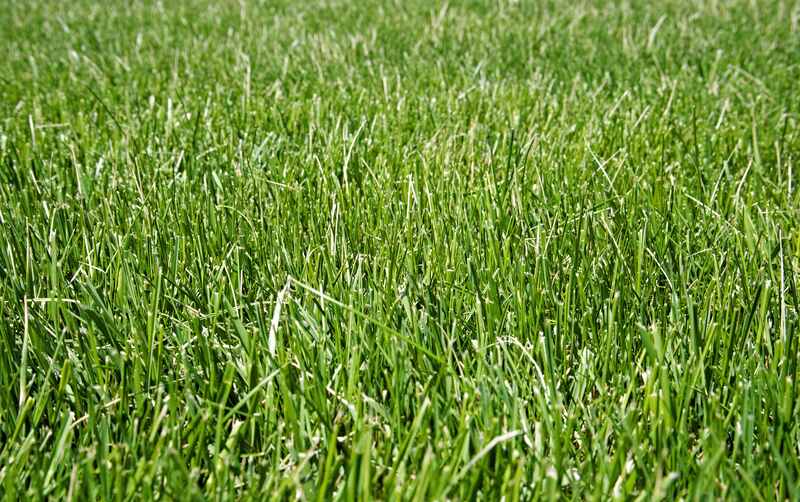
Is “red” better than “blue”? Well, it depends. Does your lawn also come with its own pines and maples offering sizable patches of shade? Then this might be the grass seed for you. Red fescue, also known as creeping red fescue, really loves the cool Maine climate and does well in both sunny and shaded areas.
This grass species prefers dry soil and won’t give you a headache when it comes to maintenance. Once established, it’s low maintenance and drought tolerant, so there’s no need to worry about dry spells. The texture is fine, and it has a deep green hue.
Although it doesn’t have a good foot traffic tolerance, it’s still a good option for both ornamental lawns and hosting the occasional backyard croquet game.
- Classification: Cool-season grass
- Spreads by: Rhizomes
- Shade tolerance: Moderate to High
- Drought tolerance: Moderate
- Foot traffic tolerance: Low
- Maintenance needs: Low maintenance requirements
- Mowing height: Set mowing height between 2 and 2.5 inches.
- Potential for disease: Moderate. Common diseases include red thread, leaf spot, dollar spot, summer patch, and snow molds.
- Soil pH: 5.5-6.5
- Soil type: Performs well in well-drained to dry soils, acid soils, and low-fertility soils.
3. Tall Fescue

Photo Credit: Aaron J. Patton, Ph.D. / Turfgrass Extension Specialist at Purdue University
Tall fescue finds itself right at home on the lawns of Maine, where it can easily stand up to both hot summers and shivery winters. This cool-season species has a deep and expansive root system that allows it to get by in various soil types.
The beauty of this grass doesn’t end with its endurance; it’s also low maintenance, which means less work for you. Its coarse texture gives your lawn a rugged yet attractive green. As a bunching grass, it can occasionally leave a few bald patches that will need a sprinkle of seeds now and then to keep things lush.
- Classification: Cool-season grass
- Spreads by: While short rhizomes are produced mainly by turf-type tall fescues, it’s important to understand that not all varieties have this characteristic.
- Shade tolerance: Moderate
- Drought tolerance: Moderate to High
- Foot traffic tolerance: Moderate
- Maintenance needs: Frequent mowing. Does not produce significant thatch.
- Mowing height: Set mowing height between 2 and 3 inches.
- Potential for disease: Tolerant of most diseases when properly maintained.
- Soil pH: 4.7-8.5
- Soil type: Adapted to a wide range of soil conditions but prefers fertile clay soils with good drainage.
Grass Seed Options:
– Triple-Play Tall Fescue Grass Seed Blend (5000 sq ft)
– Eretz Kentucky 31 K31 Tall Fescue Grass Seed (choose your size)
– Pennington The Rebels Tall Fescue Grass Seed Mix (7 lb.)
4. Perennial Ryegrass
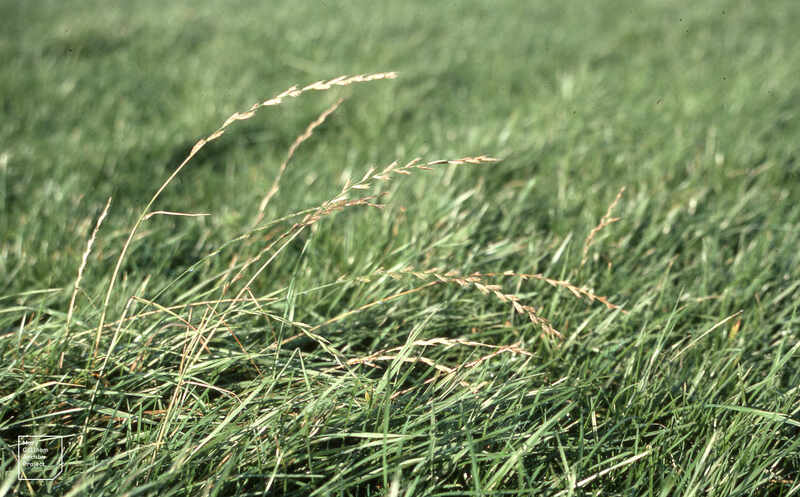
Photo Credit: Dr Mary Gillham Archive Project / Flickr / CC BY 2.0
Perennial ryegrass is a sturdy and fast-growing option for Maine lawns, bringing quick relief to bare or worn patches. Its main selling point is how fast it germinates and takes hold, easily transforming patchy lawns into a thick, green carpet quicker than any other cool-season grass.
Due to its ability to stand up to constant foot traffic, this is also the grass you want when your yard is the neighborhood hotspot for games and gatherings.
While this grass stands its ground in cooler weather, it’s not as tough as Kentucky bluegrass or tall fescue. It’s also not the best choice for those hot Maine summers because its roots just don’t dig deep enough to dodge the dryness.
- Classification: Cool-season grass
- Spreads by: Has a bunch-type growth habit
- Shade tolerance: Low
- Drought tolerance: Low
- Foot traffic tolerance: High
- Maintenance needs: Moderate mowing and fertilization requirements. Thatch is not significant.
- Mowing height: Set mowing height to 1.5 to 2 inches
- Potential for disease: High. Common diseases include gray leaf spot, red thread, and leaf spot/melting-out.
- Soil pH: 6.3–7.0
- Soil type: Prefers good drainage and fertility, but can tolerate some poor drainage.
Grass Seed Options:
– Outsidepride Perennial Ryegrass Seed (5 lbs.)
– Eretz ProTurf Perennial Ryegrass Fine Lawn Seed (choose your size)
Best Grass Seed for Maine by Region
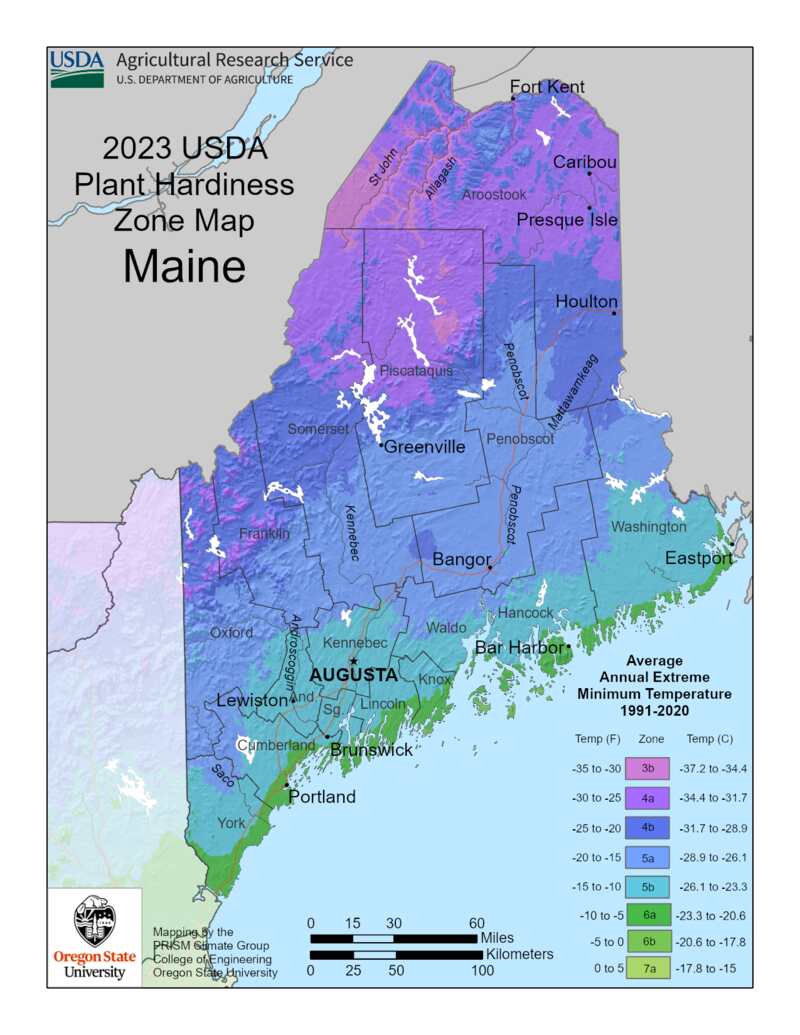
Not every corner of Maine is the same. From the rocky coastlines of the Midcoast to the dense forests of western Maine, this state offers a diverse terrain. To help you find the perfect grass for your yard, we’ll explore the ideal grass seed choices based on regional conditions.
Best Grass Seed for Northern Maine
In the towns of Presque Isle, Caribou, and Fort Kent, as well as everything in between in northern Maine, homeowners are dealing with a bit of a frosty situation. This corner of the world gets pretty chilly, to put it mildly.
So, what’s a green thumb enthusiast to do when it comes to growing the perfect patch of lawn in these conditions? Well, here are some cool season grasses that fit just right within this USDA Hardiness Zone 3b-4b:
- Kentucky bluegrass
- Fine fescue
- Perennial ryegrass
- Tall fescue
These grass varieties find their happy place when the temperatures range between 60 F and 75 F. They make the most of northern Maine’s spring and fall during the growth season and can breathe easily in the blazing summer or the freezing winter. Now, while these single grass types are great, mixing them up can give you an even stronger lawn.
Best Grass Seed for Western Maine
Mountains, hills, forests, and unfortunately, plenty of shaded spots where the sun never seems to shine directly…that’s the western Maine landscape for you. Stretching through USDA Hardiness Zones of 4a to 5b, western Maine has its fair share of weather quirks.
So, what’s a lawn-loving resident of Farmington, Bethel, Rumford, and everything in between to do? They’re faced with fickle weather, lots of shady spots, and an acidic soul with a mix of rocky, sandy, and loamy textures. Here are our top grass seed recommendations that check all these boxes:
- Fine fescue
- Red fescue
- Supina bluegrass
Now, with all the shade and trees, here are a few tips for growing grass in western Maine:
- Mow at a higher height, 3 to 4 inches, to encourage deeper root growth and improve stress tolerance.
- Reduce foot traffic in shaded areas to minimize damage to the grass.
- Prune your trees and shrubs to allow more sunlight to reach your lawn.
- Avoid overwatering, as shaded areas require less irrigation than sun-exposed areas.
- Apply fertilizer at a lower rate and frequency than in full-sun areas to prevent overgrowth and disease.
Best Grass Seed for Central Maine
Summer in central Maine, covering regions like Bangor, Waterville, and Augusta, is warm but often dry. Winter sees a drop that pushes this region into USDA Hardiness Zones of 4b to 5b. Add to this landscape forests, rivers, and lakes that are dotted with hills rich in sandy loam or heavier acidic clay soil.
The area’s dry summers, coupled with the varying soil conditions, make drought-resistant grasses a perfect fit. Here are our top picks:
- Tall fescue
- Red fescue
- Kentucky bluegrass
Consider these pieces of advice when you’re trying to get your lawn spruced up in central Maine:
- Regular deep watering rather than frequent irrigation is much appreciated by these types of grass.
- A higher mowing height helps keep the roots shaded, which gives them more resilience.
Best Grass Seed for Downeast Maine
The beauty of Downeast Maine undeniably lies in its captivating coastline and famous lighthouses. Yet living in cities like Bar Harbor, Ellsworth, and Machias comes with its own paradox. Although the climate (Zone 5a to 6a) includes harsh winters, this does little to tarnish the pleasant summer days.
The real challenge here isn’t as much the temperature as it is the salt spray fog rolling in from the Atlantic Ocean and occasional flooding. The sea salts might make your margaritas taste fabulous, but they won’t do anything good for those greens out in front. In such conditions, what you need is a salt-tolerant grass type:
- Red fescue
- Tall fescue
- Perennial ryegrass
Here are some care instructions when dealing with salty situations:
- Use fresh water for irrigation.
- Keep an eye on soil salinity and flush out salts periodically with a good drainage aid. If soil tests indicate high sodium levels, a thin layer of pelletized gypsum followed by a topdressing mix will help displace the sodium and improve soil structure, aiding in the lawn’s recovery.
- Don’t forget to fertilize your lawn regularly (but be careful not to overdo it).
Best Grass Seed for Midcoast Maine
Here in the Midcoast, you won’t find scorching heat weaves or bone-chilling freezes. Instead, you’ll find a more moderate climate in places like Rockland, Camden, or Bath. Residing within the USDA Hardiness Zones of 5a to 6a, the mild summers here are perfect for your backyard cookouts, while winters do require a bit of lawn care.
The soil here is also well drained along with a slight acidic kick from the higher clay content in the sandy loam, which makes for a fine bed for grass growth. Here are our grass recommendations for this area:
- Kentucky bluegrass
- Fine fescue
- Red fescue
- Perennial ryegrass
You can also mix them up. For example:
- Kentucky bluegrass and fine fescue mix: It combines the lush, dense growth of Kentucky bluegrass with the shade and drought tolerance of fine fescue.
- Red fescue and perennial ryegrass mix: The cold tolerance of red fescue mixed with the speedy establishment offered by perennial ryegrass can withstand foot traffic and offer good performance in sun or partial shade.
- Kentucky bluegrass, fine fescue, and perennial ryegrass mix: This mix combines the advantages of each grass species to provide a resilient lawn suitable for varying soil types and conditions.
Best Grass Seed for Southern Maine
What do cornhole, bocce, croquet, and BBQs have in common? They all require a lawn tough enough to withstand your summer social season. The home regions in this part of Maine that stretches from Portland to Lewiston and Kennebunk need a particular kind of grass seed that can take repeated foot shenanigans with grace.
Falling within USDA Hardiness Zones 5b – 6a, this region sees various weather conditions. Thus, variety is definitely needed here more so than in most other areas due to southern Maine’s longer growing season.
With an acidic soil profile ranging from well-drained sandy loam mixes to heavier clay soils, these are our recommended grasses for anyone looking for high-traffic grasses:
- Perennial ryegrass
- Kentucky bluegrass
- Tall fescue
Consider these points while prepping your yard in southern Maine:
- Go for diverse mixes of high-traffic tolerant grass seeds. This makes sure that your lawn can face those trampling feet with ease.
- Regular mowing, watering, and fertilization are non-negotiables.
- If you’ve got shade-heavy parts in your lawn, adding some fine fescue to your seed mix helps.
Understanding Maine’s Grass Growing Conditions
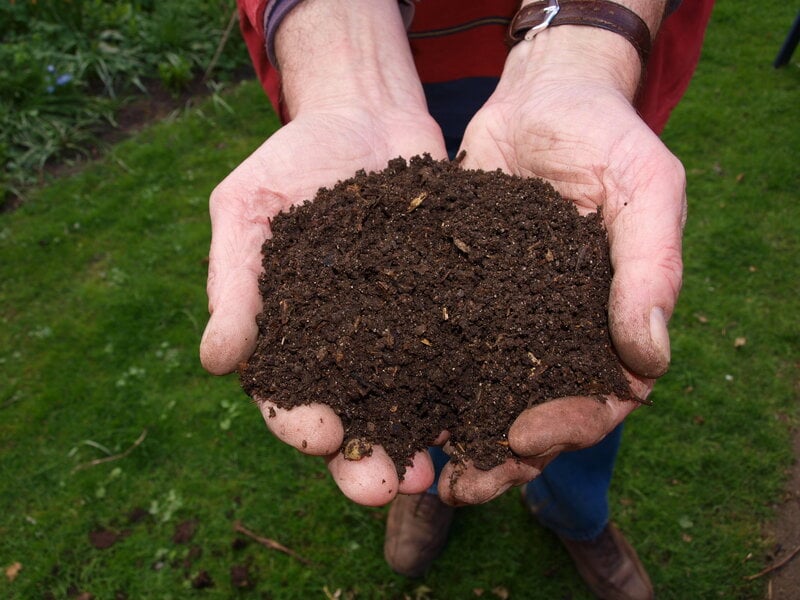
Maine falls in the USDA Hardiness Zones 3b to 6a, so your grass needs to be as hardy as a Mainer’s sense of humor. Your seed selection must withstand chilly winters, hot summers, and a short growing season.
So, you’ll need to look for a cool-season grass species that can brave the elements. Let’s understand the state’s unique growing conditions to help you choose:
Soil Types
Maine’s soil is as varied as its iconic lighthouses. Here are the most common soil types in Maine:
- Sandy loam soils line the coast: They provide rapid drainage but lack nutrient richness and moisture retention.
- Clay soils: Often found inland, they are excellent at holding nutrients but can become compacted and suffer from poor drainage.
- Fertile silt soils of river valleys: They have a good moisture-holding capacity but might be susceptible to erosion.
Pro tip: Test your soil. You will learn its pH level, nutrient content, and organic matter quantity. Most turfgrasses like a slightly acidic to neutral pH (6.0-7.0). If it’s not within that range, some types of soil amendments, like lime or sulfur, may work wonders.
Rainfall and Irrigation
Maine is certainly no stranger to rainfall, with 40 to 46 inches annually on average; however, dry spells can crop up, especially during summertime. Therefore, installing a sprinkler system would provide support during these drought periods. Here are a few tips:
- Early morning is the best time to water your grass as it allows for absorption before evaporation kicks in from daytime heat while avoiding nighttime dampness that invites fungal growth.
- Don’t drown your lawn, and aim for infrequent, deep watering instead. Moisten the soil down to about 6 to 8 inches in depth, which usually requires approximately 1 to 1.5 inches of water weekly, including rainfall.
Pro tip: For more detailed guidelines on managing your lawn throughout changing seasons, check out our month-to-month lawn care guide for Maine homeowners.
Microclimates
Maine’s geography includes numerous microclimates that significantly affect your grass’s growth.
- Coastal zones enjoy cooler summers, milder winters, and often high humidity, thanks to the ocean nearby. These factors can lead to longer growing periods and increase the risk of common lawn diseases.
- Inland regions, particularly those in mountains or valleys, face colder winter temperatures that shorten the growing season and unpredictable precipitation patterns.
- Proximity to water bodies like lakes or rivers creates higher humidity microclimates, leading to moderate temperatures supporting moisture-loving grass species.
Alternatives to Classic Grass Seed
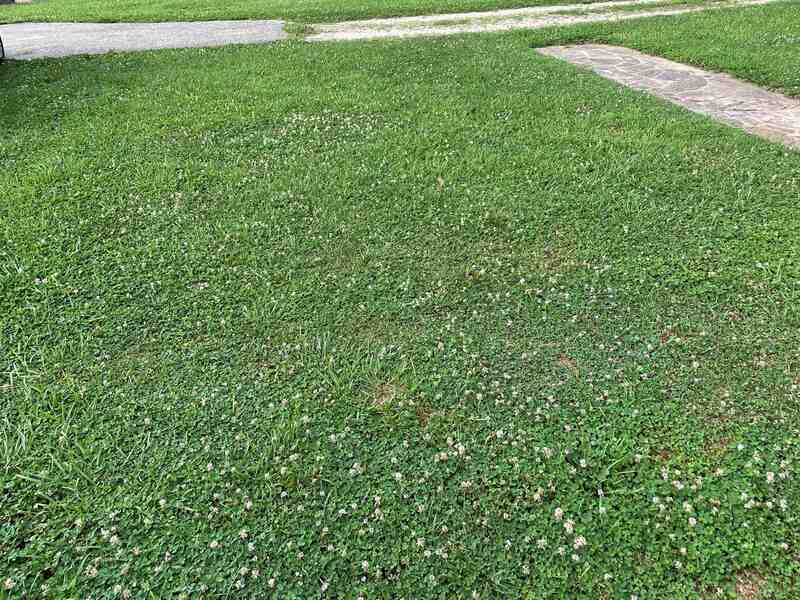
Not a fan of the constant mowing, watering, and fertilizing that comes with maintaining a traditional grass lawn? We get it. Sometimes, you just want to enjoy your garden without feeling like it’s a full-time job.
Here are some eco-friendly grass alternatives that are well-adapted to Maine’s climate conditions:
Clover Lawns
Ever notice those tiny white flowers that seem to adore lawns? That’s Dutch white clover. This hardworking plant is suitable for most soil types across USDA Hardiness Zones 3-10, so pretty much all of Maine.
It creates a pleasant carpet feel underfoot and survives well in drought conditions. A mix using fine fescue works very well. Sow it either during spring or at the end of summer.
Another reason to plant a clover lawn is its nitrogen-locking ability. It gathers nitrogen from the atmosphere and enriches the soil around it and other nearby plants, sparing you from having to pay for expensive fertilizer treatments.
Native Ground Covers
Welcome nature back into your garden by choosing local ground cover species that adapt easily and also balance out local ecosystems. Here are some options suitable for Maine:
Wild strawberries: These aren’t strangers to Maine’s woodlands and meadows. Their dense foliage spreads rapidly, covering a lot of ground. Their additional advantage lies in controlling soil erosion, especially on slopes or inclined surfaces. The fruits also provide a food supply for local birds and other wildlife.
Bearberry: This is another native ground cover perfectly suited to Maine’s climate. It’s well adapted to sandy and well-drained soils and can be found in coastal areas or sandy plains. As an evergreen shrub, it adds structure throughout the year, with dark green leaves showing off small pink flowers that blossom into attractive winter berries.
Creeping thyme: It checks all the boxes for a perfect ground cover suitable for Maine’s distinctive weather and growing conditions. It brings an interesting blend of low maintenance and aesthetic punch. Once established, it’s drought resistant and can outcompete weeds, so it can easily replace traditional lawns in USDA Zones 2 to 9 across Maine.
Moss Lawn
Opting to grow a moss lawn over traditional grass ones can be an environmentally sound and low-maintenance choice, especially considering Maine’s climatic and soil conditions.
The habitat that moss prefers (shady, moist, somewhat acidic) is abundant throughout the state, particularly in the coastal regions. While not entirely immune to pesky weeds, moss lawns certainly endure far fewer invasions than their grass counterparts.
FAQ About Maine Grass Seeds
You can, but it won’t give you that thick lawn. To get the best results, you should properly prepare the soil, create a firm seed-to-soil contact, and keep the soil moist during germination. If you loosen the soil, rake in the seed lightly, and cover it with a thin layer of mulch, you should see better growth.
The best time to seed a new lawn in Maine is in late summer to early fall (mid-August to mid-September). This period offers warm soil and cooler air temperatures, along with frequent rainfall. These conditions are perfect for seed germination and strong establishment before the winter hits.
Red fescue is one of the easiest grasses to grow in New England lawns. Its low maintenance needs, adaptability to the region’s climate, and tolerance of shade, drought, and poor soil make it ideal for this area.
Sow the Seeds of Success With Your Local Lawn Care Pro
Lawn care goes beyond just picking up some seed bags at the store. Sunlight exposure, soil type, drainage…basically, everything matters, from the amount of foot traffic your yard will see during those lively summer BBQs to its resistance against Maine’s notorious winters. It’s part art, part science, and a good deal of weekend morning sweat.
Lawn Starter helps you connect with local lawn care pros who can help you cut through the root of your lawn troubles and bring your green dreams to life.
LawnStarter participates in the Amazon Services LLC Associates Program, an affiliate advertising program. LawnStarter earns revenue from products promoted in this article.
Main Image Credit: Pxhere
